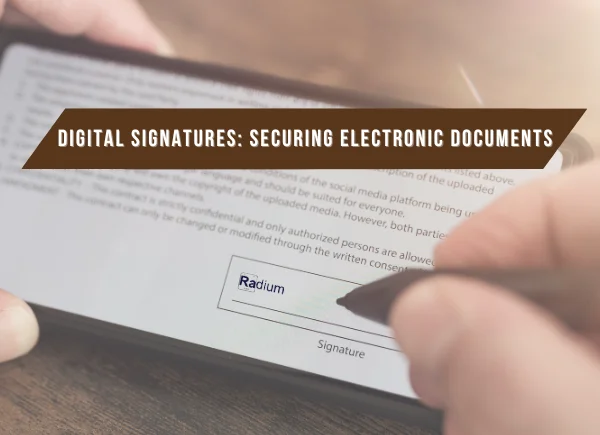
Digital signatures have gained significant importance in modern electronic communications as they provide security to sign documents and verify that they are authentic. This is where they differ from old ink signatures, which could easily be forged. Digital signatures ensure the integrity of documents with the use of advanced encryption technology.
A digital signature, therefore, is only a type of electronic signature that is chipped in with encryption within the documentation. It secures the document so as to indicate whether it has been tampered with and the person who put their signature on that document is of authentic nature. Digital signatures work through a technology referred to as public-key encryption and involve two keys: a private key and a public key.
Private Key: That is the key known only to the signer and used in creating the digital signature.
Public Key: That is a key known to other parties in the verification process.
A digital signature in a file will make your private key perform some special operations on the message to produce a unique code to attach to the file when you sign a file electronically. With your public key, someone can verify that a signature is yours and that a document has not in any way been altered.
The success of digital signatures lies in the fact that they provide many advantages over simple or traditional electronic signatures :
Security: Encryption of signed document contents ensures that impersonation and alteration are not easily effected.
Authenticity: The identity of the signer is verified, so it ensures the person who signed the document was pretending to be someone else.
Integrity: Digital signatures ensure that documents have not been altered in any way since they were signed; any alteration nullifies the signature.
Non-repudiation: Once signed, a signatory cannot deny having signed a document, as that can be proven in the court of law.
How Digital Signatures Work
These are the steps involved in creating a digital signature:
Document Signing: A unique digital signature, or seal, for that document is created by the signer with his private key. The signature in the document contains the signer's public key.
Document Delivery: The signed document is delivered to the recipient.
Signature Verification: The recipient verifies the digital signature using the signer's public key. If the public key along with the signature matches and the content is not tempered, then the signature is deemed valid.
Traditionally that is done by filling ink on a paper or just inserting the image of your signature into place. Both of these methods aren't too hard - and neither is terribly secure, either. A scanned signature is an easily copy-pasteable signatures that you can make to sign the document, this makes it even easier for some one else to forge your signature. On the other hand, digital signatures are more secure as they involve cryptographic-based technologies to ensure that only you have signed your document and not any impostor posing on behalf of you or altered by a 3rd party without being detected. Digital signatureLet's look at examples. Digital signatures are widely used in business, where these soft documents include contracts and agreements that can sign digitally to ensure their safety.
Digital signatures are the most secure way to sign an electronic document and to state its validity. It ensures the integrity of the document and engine identity verification for the signer, through the use of encryption technology. It has more security, authenticity, and integrity compared to analog signatures, and hence it has become an integral need nowadays.
The security of digital signatures are safe as they use the private key of the signer and this key is always in the secure possession of the signer.
Electronic protected records are digital documents that are kept secure with the use of passwords and encryption so that they are made confidential and authentication. The digital signatures, on the other hand, are the electronic signatures formed using the signer's private key to ascertain the origin of the signer and that the document has not been tampered with.
An electronic document is secure as it is a digital file that is protected for authenticity and confidentiality. It principally has password protection, a digital signature, and certification.
Digital signatures enjoy only for law documents as it is required to be in writing and in original, given that they make the document unchangeable and the signers identifiable.
